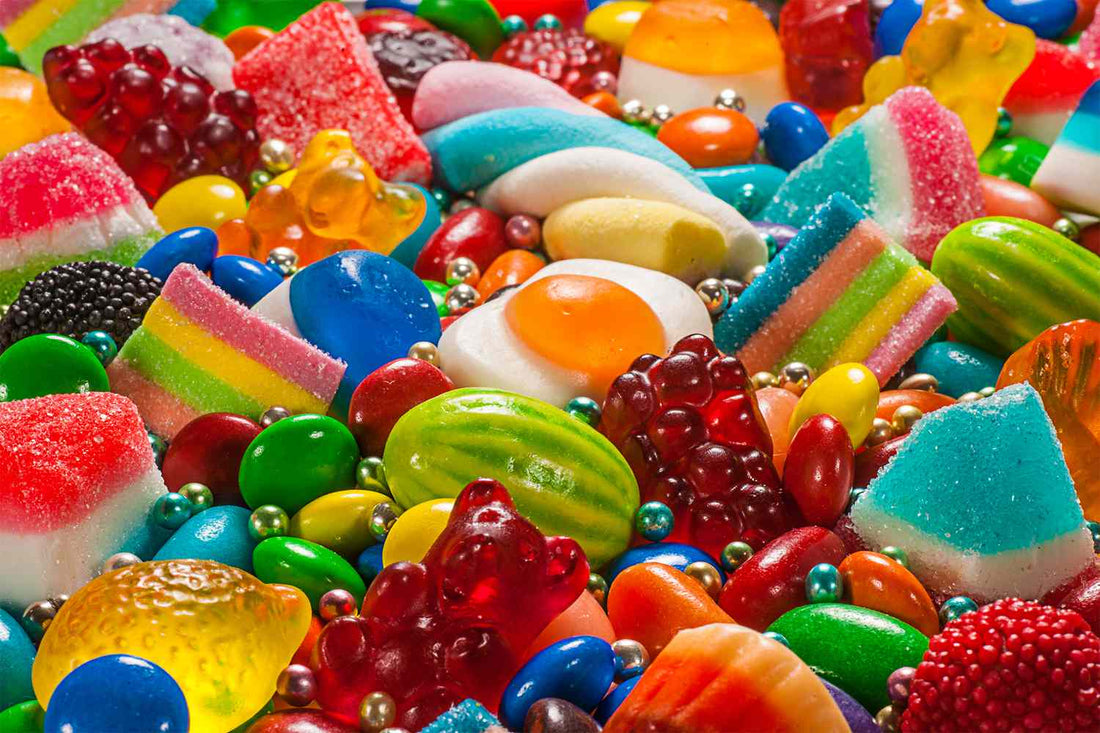
The Truth About Artificial Flavors and Colors: Why You Should Avoid Them
The Truth About Artificial Flavors and Colors: Why You Should Avoid Them
When we think of processed foods, vibrant colors and intense flavors often come to mind. But what gives those bright reds, neon greens, and extreme flavors? More often than not, the answer lies in artificial flavors and colors—ingredients designed to mimic nature but created in a lab. While they may make food look and taste more appealing, these additives come with potential risks to our health. In this blog post, we'll dive into the history of artificial flavors and colors, why they're used, the dangers they pose, and why Permissibles refuses to use them.
A Brief History of Artificial Flavors and Colors
Artificial Flavors
The creation of artificial flavors dates back to the mid-19th century when chemists discovered how to synthesize flavor compounds that replicate natural tastes. This made it possible to create flavors like vanilla, strawberry, and butter without using real ingredients, cutting costs for manufacturers. Over time, artificial flavors became a staple in the food industry, especially for snacks, candies, and processed meals, offering a consistent and cheap way to enhance taste.
Artificial Colors
Artificial food coloring has a similar history. In the late 1800s, chemists developed synthetic dyes from coal tar to enhance the appearance of food. This was seen as an advancement, making food more visually appealing. Today, artificial colors are made from petroleum-based compounds, with colors like Red 40 and Yellow 5 becoming commonplace in everything from cereals to sodas.
Why They're Used
- Cost Savings: Artificial flavors and colors are cheaper than natural alternatives, helping companies cut production costs.
- Shelf Stability: These synthetic additives last longer than natural ingredients, extending the shelf life of processed foods.
- Enhanced Appeal: Bright colors and intense flavors make food more enticing, especially for children, leading to higher sales.
- Consistency: Artificial ingredients offer consistency in flavor and color, allowing manufacturers to maintain uniformity across large batches of food products.
- Masking Quality: In some cases, artificial flavors are used to mask the lack of quality in lower-grade or processed ingredients.
The Dangers of Artificial Flavors and Colors
While they offer convenience and cost-efficiency, artificial flavors and colors have raised concerns regarding their effects on human health.
Health Risks of Artificial Flavors
- Allergic Reactions: Some artificial flavors have been linked to allergic reactions in sensitive individuals, causing symptoms like headaches, rashes, and respiratory issues.
- Chemical Exposure: Artificial flavors are created using synthetic chemicals that don’t always mimic the complexity of natural flavors, potentially introducing harmful compounds into your body.
- Unknown Long-Term Effects: Since artificial flavors are a relatively recent innovation in human history, there are still questions about their long-term impact on health.
Health Risks of Artificial Colors
- Hyperactivity in Children: Studies have shown that certain artificial dyes, particularly Red 40, Yellow 5, and Yellow 6, may increase hyperactivity and attention problems in children.
- Cancer Risks: Some artificial dyes, like Red 3, have been linked to cancer in animal studies, raising concerns about their potential carcinogenic effects in humans.
- Allergies and Sensitivities: Artificial colors can trigger allergic reactions, particularly in individuals with asthma or chemical sensitivities.
Global Bans and Restrictions
While artificial flavors and colors are commonly used in the United States, many countries have taken a stand against their use due to potential health risks.
- Europe: The European Union has strict regulations on artificial dyes. Certain dyes, such as Red 40, Yellow 5, and Yellow 6, must come with a warning label that states they may cause hyperactivity in children. Some food companies reformulate their products to remove these dyes entirely in Europe.
- United Kingdom: Many artificial colors are banned in the UK, where there are tighter regulations on food additives.
- Norway and Austria: These countries have banned several artificial dyes entirely, citing health concerns.
- Canada: While not as strict as the EU, Canada has placed limits on the use of artificial colors in food products, requiring manufacturers to adhere to health guidelines.
- Japan: Japan has banned a number of artificial food dyes, such as Red 40 and Yellow 5, due to safety concerns.
Despite the bans and restrictions in other parts of the world, many of these ingredients remain approved for use in the U.S. This raises the question—if these additives are deemed unsafe elsewhere, why are they still in our food?
Permissibles’ Commitment: 0 Artificial Flavors, 0 Artificial Colors
At Permissibles, we believe in providing you with food you can trust. That’s why you won’t find any artificial flavors or colors in our products. Instead, we rely on natural ingredients to bring out the best in flavor and appearance. Real spices, fresh herbs, and vibrant vegetables create flavors and colors that are not only delicious but also safe for you and your family.
Conclusion
Artificial flavors and colors may make food look and taste more appealing, but the health risks they pose should not be overlooked. Many countries around the world have banned or restricted these additives due to concerns over hyperactivity, allergies, and even cancer. At Permissibles, we take a stand against these harmful ingredients, choosing only natural, wholesome alternatives that align with our commitment to clean eating.
Join us in saying no to artificial additives and yes to real, delicious food that you can feel good about.